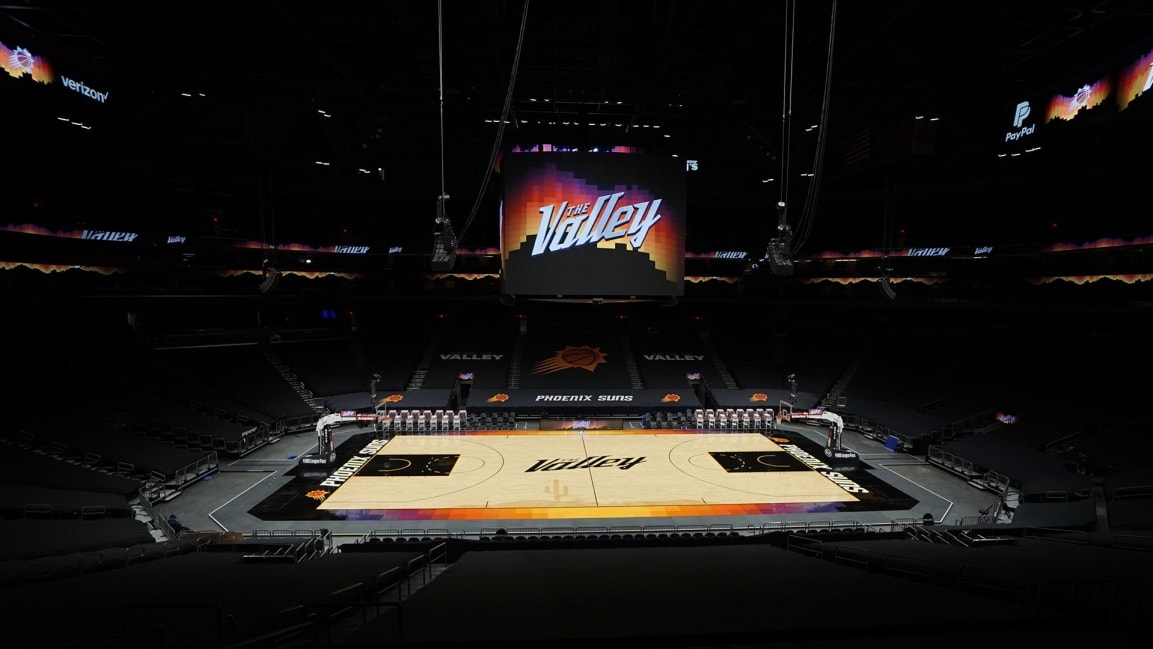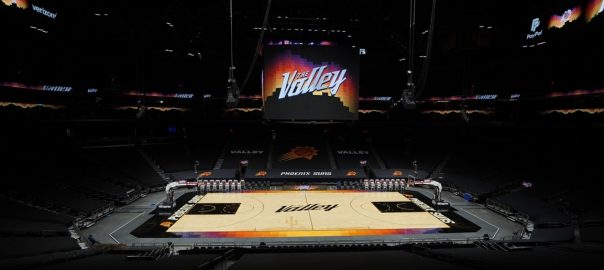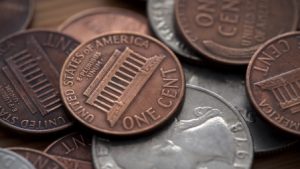
There was 0.9 seconds left in Game 2 of the 2021 Western Conference Finals last June, and the Los Angeles Clippers were up on the Phoenix Suns 103-102. The Suns had a baseline inbound—and a sliver of a slim chance to steal the win. Suns forward Jae Crowder had the ball. But instead of doing the expected and finding star player Devin Booker to take that final shot, Crowder tossed the ball toward the Clipper backboard—and right into the waiting hands of leaping Suns center Deandre Ayton.
The play quickly became labeled the “Valley-Oop,” playing off the Valley nickname for the greater Phoenix area.
DEANDRE AYTON FOR THE WIN ????
UNBELIEVABLE GAME WINNER!! pic.twitter.com/tcHwtzUcty
— ESPN (@espn) June 23, 2021
Eighteen hours later, the Suns were selling Valley-Oop T-shirts, and moved more than $100,000 worth of them in less than a week. Crowder, Ayton, and coach Monty Williams deserve credit for the play. But the branding moment, the name, and the T-shirt success belongs to the Suns marketing team and the years of work leading up to their winning dunk. During the post-game press conference, it was a Suns social media producer that asked Ayton what he thought of the phrase Valley-Oop, and the Suns center replied, “I love that.” Cue the branding of a big game moment.
As Williams and general manager James Jones have rebuilt the Suns on the court, chief marketing and communications officer Dean Stoyer and his team have been methodically reestablishing a brand that had been wandering the desert for the better part of a decade. As the Suns kick off the 2022 NBA playoffs as the No. 1 seed in the West, after a record-breaking year on the court, it has also transformed itself into a league leader in ticket and merchandise sales, the latter of which is up 50% year-over-year. Meanwhile, social media engagements have been boosted across the board over last year, with Twitter up 74%, Facebook up 587%, and Instagram up 298%. How did Stoyer crack the elite ranks of sports marketers? And what does it mean for any brand that knows it needs a refresh? I have been following Stoyer’s moves for the better part of a year. Here’s how he’s put the Suns’ brand on the rise, mirroring his team’s rise in the standings.
Throughout the 1990s and early 2000s, the Suns were a perennial Western Conference powerhouse, both as a team and a brand. You had your Charles Barkley and Kevin Johnson era, up through to the run-and-gun Steve Nash, Amar’e Stoudemire, and Shawn Marion teams. Even if you weren’t a Suns fan, you were a fan of how they played, which made the team’s brand one of fun, style, and likable stars. But from 2012 to 2019, the team shed its big names—and winning ways—and became just another name near the bottom of the standings.
Jones began as general manager in 2018, current head coach Williams started in 2019—the same year Stoyer moved from a career at such brands as Nike and Under Armour to his first NBA team. “When I got here, our fanbase was splintered, at best,” says Stoyer. “This was a brand that had really lost its identity. It has a rich heritage, had some great runs, a couple trips to the Finals. But it went from that to a lot of interchanging coaches, GMs, and players, little continuity, and really no steward for the brand.”
FINDING THE VALLEY
In one of Stoyer’s first conversations with Jones, they talked about the fanbase. Jones told Stoyer that, yes, this was the Phoenix Suns but that the team represented much more than just one city. It was the first pro sports team in the state of Arizona, as of 1968. There isn’t another basketball team for thousands of miles—north to Denver, east to Texas, west to California. That’s a lot of miles for a fanbase. Stoyer started spending time with fans, colleagues, and brand partners, just to get a sense of the Suns’ place. “I kept hearing the phrase ‘The Valley’,” says Stoyer, referring to the city’s nickname as the Valley of the Sun, and its place as part of central Arizona’a Salt River Valley.
So when the team had the opportunity to redesign its jersey in 2020 for the NBA’s City Edition, the Suns decided to expand its tent beyond city limits and go with The Valley.
We support The Valley.
We play for The Valley.
Now, we are reppin’ ???????????? ????????????????????????.
City Edition 2020-21: https://t.co/t1l2nEvmiF#WeAreTheValley pic.twitter.com/2BeZ720Dag
— Phoenix Suns (@Suns) November 12, 2020
“I’ve lived in other markets—Portland, New York, Boston—that have a very strong sense of pride and that who they are is really informed by where they live,” says Stoyer. “The brand strategy was to galvanize our fanbase, give them something to be proud of, and start to rebuild the trust in the organization. This step was to give them something everyone could put their arms around and be proud of.”
PROXIMITY AND ACCESS
One key aspect of how the Suns are approaching brand strategy is running everything through the North Star of bringing the fans closer to the players and to each other, as a fan community. “We talk a lot about access and exclusivity,” says Stoyer. “We have a great relationship with our coaches and staff and make sure never to overstep that. Fans everywhere want to get closer to the players, know more about them. We do as much as we can to spotlight the insights of our players and what they want to share with our fans.”
That comes to life in a few different ways. One is the team’s ongoing content series, Courtside, which gives fans an inside look at how the players train, as well as the facilities and staff that help them along the way. Another is getting Suns players to play NBA2K against other teams and streaming the games on Twitch. That started in March 2020, just days after the NBA announced it was shutting down due the pandemic—and grew to draw 7.9 million views.
The team has also introduced Road Game Rallies for the playoffs last year, and again this season, where fans come to the Footprint Center when the team is away to watch on the big screen together and enjoy all the bells and whistles of a home game. During home games, there’s Rally Beach, 12,000 square feet of arena parking lot, which has been coated in 126 tons of sand, where fans can hang out and watch the game on a 30-foot screen, surrounded by food trucks and drink stations. Inside the arena, the Suns are one of just two NBA teams using new mobile check-out tech from Fanatics, which allows fans to walk into the team store and scan and pay for items right from their phone.
“The Suns’ brand is hotter than it’s ever been over the past several years, and it’s been an incredible opportunity for Fanatics to be a part of their story and to create unique engagement opportunities with their great fans,” says Ed O’Brien, Fanatics’ senior VP of business development and strategy.
The team has now gone even further in building off of its merchandising success, launching a player-designed apparel collection called Valley Threads, which features hoodies created with individual players to give them an opportunity to express themselves in a different way. First up was Suns guard Cam Payne, who in February debuted a hoodie that features the phrase, “Don’t Wake Up, Keep Dreaming,” and imagery representing his long, winding journey in pro basketball on his way to Phoenix. The Suns sold 500 in the first day.
“He’s not Devin Booker or [star point guard] Chris Paul, but he has a following here, and this gave him an opportunity to connect with them,” says Stoyer. “[Veteran forward] Jae Crowder is next up. It’s all about having the trust and connection to our players, to create content and products with them.”
Now this weekend, the Suns start the 2022 playoffs after posting a league-best regular season record. As a team and a brand, Phoenix is hoping they don’t wake up anytime soon.
Fast Company , Read Full Story
(43)
Report Post






